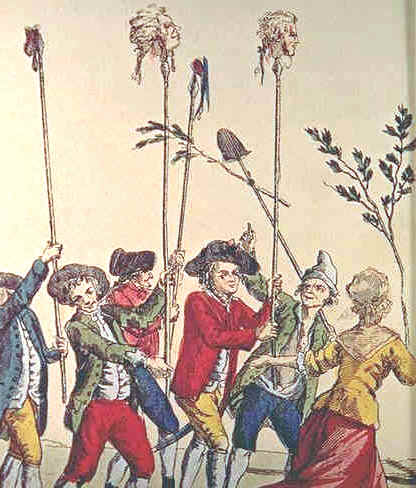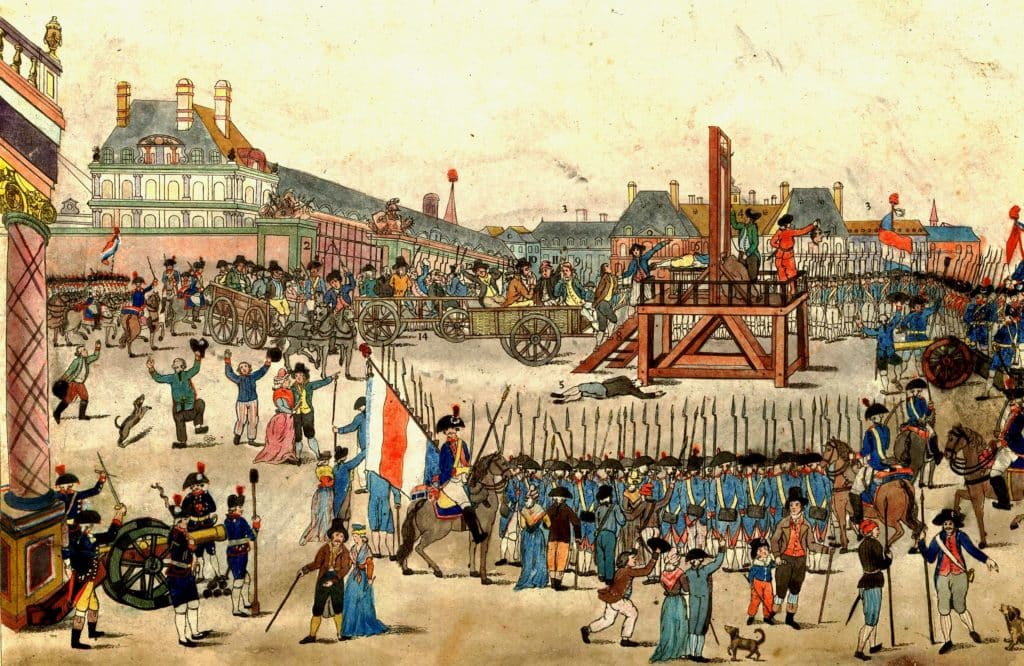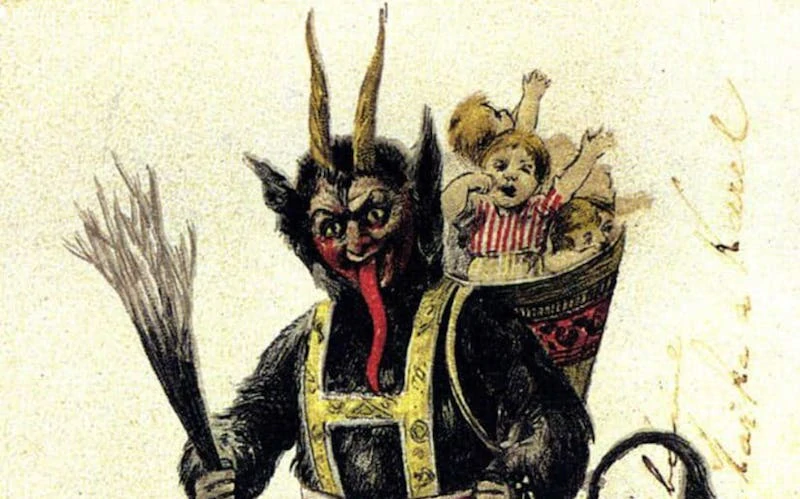Last updated on July 29th, 2022 at 08:48 pm
On the 6th of April 1793, a meeting of the National Convention, the parliament of the French Revolutionary government, was held at the Salle du Manége riding academy near the Tuileries Palace in central Paris.
The new French Republic, which had only been formally established the previous September, faced a series of threats, both within and without France.
In response to these, the Convention agreed at this meeting to establish a new body, known as the Committee of Public Safety. It would be given extraordinary powers to tackle these threats to the Republic.
Over the next year, the Committee would become an almost dictatorial body within French politics.
Moreover, dominated by the powerful radical Maximilien Robespierre, the Committee soon began terrorizing the people of France, arresting hundreds of thousands of perceived enemies of the state and executing thousands. This is the story of the Reign of Terror overseen by the Committee.

A Brief History of the French Revolution
The backdrop to this was, of course, the French Revolution of 1789. For most of the seventeenth and eighteenth centuries, France had been ruled as an absolutist monarchy, with very little form of constitutionality at all.
Parliament did not sit between 1614 and 1789. However, a series of crises occurred in the 1780s, notably a major fiscal crisis that left King Louis XVI’s French government short of money. This was compounded by famines across France which led to widespread social unrest.
To garner support for his regime and acquire financial aid from the aristocracy and gentry of France, the king agreed to call a parliament for the first time in 175 years in the early summer of 1789. But things soon backfired.
When the members met at his grand palace of Versailles outside Paris, they quickly side-lined the king and his ministers and began forming a new legislative body that would start governing France itself.
Later that summer, they took over Paris and moved the government there from Versailles. Weeks later, the Parisian mob, furious at the aloof and unethical conduct of the monarchy, dragged King Louis and Queen Marie Antoinette to Paris and effectively placed them under house arrest.
The country remained a monarchy for the time being. But all power had now effectively been vested in the hands of the National Constituent Assembly.
A Republic Under Siege
The French Revolution became more and more radical over time as political groups such as the Jacobins emerged.
As they did, they eventually decided to dispense with the pretense of monarchy altogether and created the First French Republic in September 1792, which was to be governed by the new National Convention. This Republic, though, was under siege.
The other European powers, notably France’s traditional enemy, Britain, the absolutist monarchy of Prussia in Germany, and Queen Marie’s homeland, Austria, were unwilling to accept this radical new political system. Beginning in the late spring of 1792, a series of wars broke out between France and its neighbors.
Additionally, it also faced an existential threat from within. Many elements within France were determined to destroy the Revolution and the Republic.

These Counter-Revolutionaries came mostly from the aristocracy and the Roman Catholic Church. Both had a vested interest in returning to the situation before 1789.
To compound matters, the King and Queen had attempted to flee from France to the Austrian lands in the Low Countries in June 1791. They were prevented from doing so and placed under house arrest again in Paris.
Still, their continuing presence in the capital made them a fulcrum for those who resisted the revolutionary government. As a result, rebellions and insurrections emerged across France led by supporters of the monarchy in 1791 and 1792.
These constituted a major internal enemy within France. The primary goal of setting up the Committee of Public Safety was to destroy these enemies of the new republic within France.
The Reign of Terror
Once it was established, the Committee began a ruthless crackdown on dissidents within France. Its main goals were to identify supporters of the monarchy and the old political order.
By the time it was established, the Republican government had already executed King Louis. However, the queen was still alive, as were their children, who could still succeed in a restored monarchy.
Anyone who supported the old order or the foreign powers for their attempted interventions in France could be arrested, and many were quickly sent forward for trial and execution.

The Committee became especially brutal in its methods from late July 1793 when Maximilien Robespierre was drafted onto the board, which usually consisted of around a dozen members.
A demagogue and populist, Robespierre managed to stir up the Parisian mob into supporting an unparalleled wave of arrests, and executions.
In December 1793, the Committee was even granted executive powers to carry out its work, making it France’s most powerful political body.

As a result, in the year between the summer of 1793 and the summer of 1794 Paris’s jails overflowed with prisoners. Many were given short, cursory trials before being sent to be executed by guillotine at the Place de la Revolution or some other site.
In total, it is believed that nearly 17,000 people were executed across France during the Reign of Terror. In addition, approximately 10,000 more lost their lives in prison due to squalid conditions and poor treatment.
The Fall of Robespierre and the End of the Terror
Eventually, the appalling brutality produced a backlash. In the midsummer of 1794, Robespierre proposed new laws that would streamline the process of arresting, indicting, and executing individuals deemed enemies of the state.
The proposed Law of 22 Pairal would have effectively made it possible for anyone to lose their life on the back of an accusation. So many with the Assembly perceived they might not become targets themselves.
Another critical factor was the Committee’s decision to arrest, indict and execute Georges Danton, one of the leading members of the French Revolutionary government, in April 1794.
Consequently, in late July 1794, at the beginning of what was known as the Thermidorian Reaction, Robespierre was arrested, placed on trial, and quickly executed.

After that, the power of the Committee of Public Safety was reigned in, although it continued to operate until the autumn of 1795.
By then, France’s internal enemies had been purged, and the country was actually going on the offensive abroad, conquering the Low Countries and parts of the Rhineland as the Republic demonstrated the power of national conscription as a means of waging war on its enemies.
Overall, the Reign of Terror is seen as bringing the first stage of the French Revolution to an end and tarnishing the purpose of a morally justifiable revolution when it first erupted in 1789.

